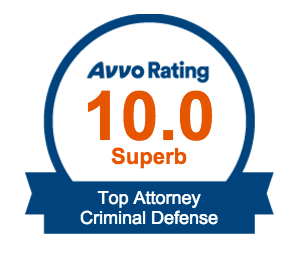One of the biggest concerns that people charged with a crime have is how much time in prison they are facing, if convicted. Sentencing can vary widely depending on the location and circumstances of the case, or even just depending on who the judge is. For many defendants facing charges in federal court, the severity of federal sentencing is daunting. Federal convictions are notorious for carrying long sentences, although not every case will result in a lengthy sentence. At Best & Brock, our goal is always to reach the best settlement possible for our clients’ cases. Oftentimes, this involves negotiating for reduced charges and more lenient
sentences. If you or a loved one has been charged with a federal crime, reach out to us to learn about how we can make an impact on your case!
| |
How Federal Sentences Are Calculated
In criminal cases at the federal level, judges depend on the United States Sentencing Guidelines (also referred to as the Federal Sentencing Guidelines) to calculate sentences. The Guidelines are a set of rules established by the U.S. Sentencing Commission that attempts to create a uniform sentencing system for serious crimes in the federal courts. The Guidelines were instituted in the 1980s in an effort to correct inequalities in sentencing that had been observed throughout the nation. Drawing upon data from tens of thousands of cases, the Sentencing Commission determined which elements of a crime and of a defendant were considered in sentencing practices prior to the guidelines. They codified these practices in the Guidelines, which have been modified several times since they were first passed into law.
One of the most important changes to the Federal Sentencing Guidelines happened in 2005, when the Supreme Court of the United States held that the Guidelines were advisory, not mandatory. Although the Guidelines were at first styled to be mandatory, the Supreme Court held this to be a violation of defendants’ Sixth Amendment right to a trial by jury in U.S. v. Booker, 543 U.S. 220 (2005). Following this decision, judges are required to calculate and consider the Sentencing Guidelines, but these rules are no longer strictly binding upon their sentencing determinations. This permits judges to exercise more discretion in sentencing, whether that be to the benefit or detriment of the defendant.
The U.S. Sentencing Guidelines consider a breadth of information in order to place a particular defendant on a sliding scale of sentencing ranges. This information is placed into two broad categories: the Offense Category and the Criminal History category.
Offense Category
The Offense Category looks at the elements of the offense the defendant has been convicted of. Each offense starts out with a base category level, such as 32 for the crime of kidnapping, from which points can be added or subtracted depending on the offense’s characteristics. For example, was the offense violent, or was it a nonviolent property or drug offense? How many victims were involved, and were these victims particularly vulnerable, such as due to their age? In certain offenses, whether or not the internet was used in the commission of the crime is also considered. Once all of these factors are taken into account, the defendant’s crime will effectively be “scored” into one of 43 Offense Categories, with 43 being the most severe category.
Criminal History Category
The Criminal History category surveys a defendant’s past criminal activity or lack thereof. There are six Criminal History categories, with Category I housing defendants with little to no criminal history, and Category VI housing defendants with extensive, serious criminal history.
The Sentencing Table
Once a defendant’s Offense Category and Criminal History Category have been calculated, the court can use the federal Sentencing Table to determine what the suggested sentencing range for this particular defendant’s particular crime would be. The table has two axes, one for each Category. A higher score in each Category can raise the suggested sentencing range, and a lower score can diminish the suggested sentencing range. This range is expressed in months, with many defendants facing years or even decades-long sentences. In fact, the most serious offenses, or those defendants with serious criminal history, may even be punished with life in prison.
Aggravating and Mitigating Factors
When utilizing the Federal Sentencing Guidelines, judges must consider whether or not certain aggravating or mitigating factors are present. We previously published a blog talking about the concept of these sentencing factors, which you can check out here. As applied to the U.S. Sentencing Guidelines, aggravating and mitigating factors carry numerical values that could move a defendant up or down that sliding scale of sentencing ranges by adjusting their Offense or Criminal History category. For example, acceptance of responsibility can reduce the defendant’s offense category by two points. On the other hand, being convicted of multiple counts of an offense can raise the defendant’s offense category. An experienced attorney, such as our team at Best & Brock, will utilize the mitigating factors laid out in the Sentencing Guidelines to our clients’ advantage, while minimizing any damage caused by aggravating factors.
Mandatory Minimum and Maximum Sentences
Certain crimes have mandatory minimum sentences, which means that the sentencing judge is required to sentence the defendant to a certain amount of time, at a minimum, for a particular offense. Likewise, there can be a maximum sentence for certain crimes, meaning the judge cannot sentence defendants over a certain amount of time. These statutory minimum and maximum sentences are laid out in law separately from the calculation of a defendant’s Offense Category and Criminal History Category, and must be considered alongside the Sentencing Table when a defendant’s federal sentence is calculated. Here’s an example: if a defendant is convicted of the crime of sexual exploitation of children, under 18 U.S.C.A. § 2251, the court must sentence them to at least 15 years but not more than 30 years according to the statutory sentencing range.
| |
An Example of the Application of the Federal Sentencing Guidelines
In order to better understand how sentencing is calculated in federal cases, let’s use a fictional example.
Defendant John Doe just pleaded guilty to possessing 100 kilograms of marijuana with the intent to distribute, under 21 U.S.C. 841(b)(1)(B)(vii), in a deal negotiated by his attorney. The statutory sentencing range for this offense is not less than 5 years and not greater than 40 years. Furthermore, the base offense level for this offense is 24 (See the Drug Quantity Table under FSG § 2D1.1). As part of the plea deal, the prosecutor has agreed not to oppose John Doe receiving credit for acceptance of responsibility. This will decrease his Offense Category from 24 to 22. However, John Doe was also in possession of a gun when he was arrested, which increases his Offense Category by two points, back up to 24 (FSG § 2D1.1). Luckily for John Doe, his attorney was able to demonstrate that he was a minor participant in the criminal activity, which results in a 2-point deduction, again bringing his Offense Category down to 22 (FSG § 3B1.2).
John Doe has had a few previous run-ins with the law. He has two previous convictions of simple possession of marijuana, which would each add 2 points to his criminal history calculation. However, John Doe’s attorney points out that one of these simple possession convictions occurred several decades before the present offense, therefore it should not be counted in his calculation. John Doe also served two years in a state prison facility following a theft conviction, which will add 3 points to his criminal history calculation. This results in a final score of 5 points (FSG § 4A1.1 and FSG § 4A1.2). According to the Sentencing Table, this places John Doe in Criminal History Category 3.
With John Doe’s Offense Category of 22 and his Criminal Offense Category of 3, the judge is recommended by the Sentencing Guidelines to sentence him to anywhere from 51 months to 63 months imprisonment, or 4.25 to 5.25 years. Because the mandatory minimum sentence, under 21 U.S.C. 841, is 5 years, the judge must sentence John Doe to at least that much time. John Doe’s attorney is able to convince the judge not to sentence John Doe to any more time than the statutory minimum, therefore he receives the shortest sentence prescribed by the law.
Unfortunately, 21 U.S.C. 841 prevents John Doe from being able to serve his sentence on probation, so he will have to serve this five year sentence in prison. Once he is released from prison, 21 U.S.C. 841 further requires John Doe to serve a term of supervised release for a few years.
Upward and Downward Departures in Sentencing
As we mentioned at the beginning of this blog, the U.S. Sentencing Guidelines are advisory, not mandatory. A judge can use their discretion to make an upward or downward departure from the Sentencing Guidelines’ recommendations when they feel that the Guidelines do not adequately account for mitigating or aggravating factors in a particular case. Say, for example, that a defendant provided significant assistance to investigators after being arrested, which resulted in many other crimes being brought to justice. In this scenario, the court may depart downward from the Guidelines’ recommended sentencing range in order to give the defendant a more lenient sentence in recognition of their help.
Why You Need an Attorney To Help You Navigate Federal Sentencing
Ultimately, not every defendant against whom federal charges are brought can have the charges against them dismissed. In cases where the evidence against the defendant is overwhelming, the defendant may be convicted, and will then move into the federal sentencing process. Clearly, the calculation of federal sentences is a deeply complicated process, involving both numerical and non-numerical considerations. An experienced criminal defense attorney will offer their familiarity with the Federal Sentencing Guidelines in order to reach the shortest sentence possible. Furthermore, a criminal defense attorney will communicate with the prosecutor in an effort to prevent them from arguing for a longer sentence. Finally, a criminal defense attorney can also present an argument to the judge in support of a downward department from the Sentencing Guidelines, when necessary.
Best & Brock’s highly rated criminal defense attorneys will enter your sentencing hearing with as much vigor as they had at your first court appearance. When you need someone to guide you through this most crucial step in federal criminal procedure, Best & Brock is the best advocate for you. Reach out to us to schedule a FREE consultation with one of our attorneys!
Related VideosShould I Plead Guilty? Choosing a Criminal Defense Lawyer |










